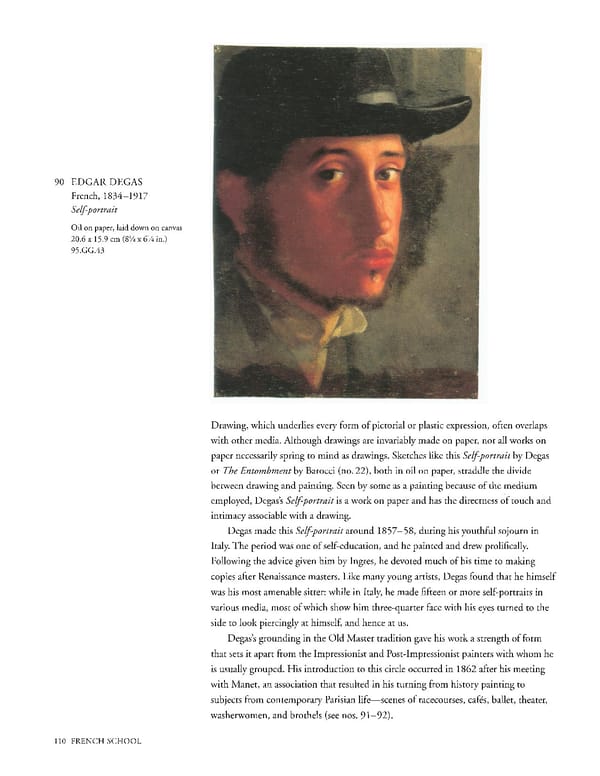90 EDGAR DEGAS French, 1834-1917 Self-portrait Oil on paper, laid down on canvas 20.6 x 15.9 cm (8 x 6¼ in.) 95.GG.43 Drawing, which underlies every form of pictorial or plastic expression, often overlaps with other media. Although drawings are invariably made on paper, not all works on paper necessarily spring to mind as drawings. Sketches like this Self-portrait by Degas or The Entombment by Barocci (no. 22), both in oil on paper, straddle the divide between drawing and painting. Seen by some as a painting because of the medium employed, Degas's Self-portrait is a work on paper and has the directness of touch and intimacy associable with a drawing. Degas made this Self-portrait around 1857—58, during his youthful sojourn in Italy. The period was one of self-education, and he painted and drew prolifically. Following the advice given him by Ingres, he devoted much of his time to making copies after Renaissance masters. Like many young artists, Degas found that he himself was his most amenable sitter: while in Italy, he made fifteen or more self-portraits in various media, most of which show him three-quarter face with his eyes turned to the side to look piercingly at himself, and hence at us. Degas's grounding in the Old Master tradition gave his work a strength of form that sets it apart from the Impressionist and Post-Impressionist painters with whom he is usually grouped. His introduction to this circle occurred in 1862 after his meeting with Manet, an association that resulted in his turning from history painting to subjects from contemporary Parisian life—scenes of racecourses, cafes, ballet, theater, washerwomen, and brothels (see nos. 91-92). 110 FRENCH SCHOOL
 Masterpieces of the Getty Museum: Drawings Page 110 Page 112
Masterpieces of the Getty Museum: Drawings Page 110 Page 112